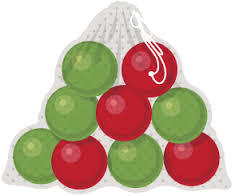A probability problem by Shanthanu Rai

In a bag there are 15 balls of either red or green color. Let be the event that it contains exactly green balls and its probability is proportional to . Now a ball is chosen at random. Let be the probability that the ball is red. If , where and are coprime positive integers, find .
The answer is 24.
This section requires Javascript.
You are seeing this because something didn't load right. We suggest you, (a) try
refreshing the page, (b) enabling javascript if it is disabled on your browser and,
finally, (c)
loading the
non-javascript version of this page
. We're sorry about the hassle.
Let p ( G k ) be the probability that the bag has k green balls. Then p ( G k ) = a k 2 for some constant a , for which we require that
k = 0 ∑ 1 5 p ( G k ) = 1 ⟹ k = 0 ∑ 1 5 a k 2 = a ∗ 6 1 5 ( 1 5 + 1 ) ( 2 ∗ 1 5 + 1 ) = 1 ⟹ a = 1 2 4 0 1 ,
where the formula k = 0 ∑ n k 2 = 6 n ( n + 1 ) ( 2 n + 1 ) was used. Thus p ( G k ) = 1 2 4 0 k 2 .
Next, to find P ( A ) , we first note that if event G k occurs, the probability that the randomly chosen ball is red is 1 5 1 5 − k = 1 − 1 5 k . We will denote this conditional probability as P ( A ∣ G k ) . So then P ( A ) can be calculated as
P ( A ) = k = 0 ∑ 1 5 P ( A ∣ G k ) p ( G k ) = k = 0 ∑ 1 5 ( ( 1 − 1 5 k ) 1 2 4 0 k 2 ) =
k = 0 ∑ 1 5 1 2 4 0 k 2 − k = 0 ∑ 1 5 1 8 6 0 0 k 3 = 1 − 1 8 6 0 0 1 ( 2 1 5 ( 1 5 + 1 ) ) 2 = 1 − 3 1 2 4 = 3 1 7 ,
where the formula k = 0 ∑ n k 3 = ( 2 n ( n + 1 ) ) 2 was used. Thus q − p = 3 1 − 7 = 2 4 .